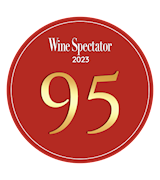Best Portuguese Wine Appellation Types
Vintage Port is a style made from the best grapes of a single year harvest. It is considered the most prestigious and the highest quality port style. Vintage is not produced every year, but only when port houses decide that the wine is of sufficient quality.
Vintages make only about 2% of all port production, and in the best years, all port houses will declare a Vintage. The decision to declare a Vintage can be made after Portugal’s Port Wine Institute had approved it. Vintages are barrel-aged for two to three years and are not filtered before they are bottled.
Tawny is a variety of fortified port that is usually oak-aged for around seven years (Reserva), but vintages may extend to ten, twenty, and even over forty years of age. These fortified red wines are praised for their complex aromatic profile as well as their rich and smooth texture.
Usually amber and often sweet, Tawny ports display an array of different aromas that typically include a nutty combination of toffee and caramel, coffee, vanilla, dates, ripe red and dark fruit, figs, or prunes. Due to its different character that depends on the age, Tawny is a perfect accompaniment to various desserts, especially those made with nuts, fruit, chocolate, or eggs.
VARIATIONS OF Tawny Port
Ruby is the most common and the freshest style of fortified port wines. Made from various red grapes, Ruby ports are usually aged for three years, typically in steel or concrete tanks, and are considered to be an approachable introduction to more complex port wines.
As the name suggests, these fresh wines usually have rich ruby color, while the flavors and aromas are light and fruity, all accompanied by subtle tannins. Ruby port can be served at room temperature, slightly chilled, or in some cases over ice. They usually pair well with cherry or chocolate-based desserts and blue cheese.
Colheita is a type of Tawny port made with single-harvest grapes. They have to be aged for at least seven years, though most producers opt for longer barrel maturation and decide to bottle it when the wine is ready and considered of sufficient quality.
During wood maturation, the wine will become smooth and develop complex aromas and flavors reminiscent of dried fruits, spices, nuts, and citrus fruits. Colheita is a style of exceptional quality that is usually reasonably priced. It is quite rare, and only around 1% of port production is designated to become Colheita.
THE BEST Colheita Fortified Wines

Justino's Madeira Wines
Colombo Madeira Colheita 1998 Sweet
Frankfurt International Trophy - Grand Gold 2018

Justino's Madeira Wines
Justino’s Madeira Verdelho Colheita 1997
Portugal Wine Trophy - Grand Gold 2022

Justino's Madeira Wines
Justinos Madeira - Malvasia Colheita
Frankfurt International Trophy - Grand Gold 2017

Justino's Madeira Wines
Justino's Madeira Sercial Colheita 1997
Frankfurt International Trophy - Grand Gold 2022
Vinho Verde is a Portuguese appellation for a variety of wines made with native regional grapes. The appellation is located in northern Portugal, and it is mainly defined by the Minho river. Verde, which translates as green, does not refer to the color of the wines but to the fact that they are predominantly consumed young.
Another explanation says that the region's lush green landscape was the inspiration. Vinho Verde wines can be red, white, or rosé. Most of these wines are blends, though there are some varietals. The list of permitted grapes is dominated by six varieties: Alvarinho, Arinto, Azal, Avesso, Loureiro, and Trajadura.
Port is a fortified wine that has its origins in the Duoro Valley. It is produced from various grape varieties, though Touriga Nacional, Tinta Barroca, Tinta Roriz, Touriga Francesca, and Tinta Cão are considered the best for the red port, while Viozinho, Rabigato, Arinto, Cedega, Gouveio are largely used for the production of white port.
After fermentation, the wine is fortified with brandy and is usually matured in oak casks. Depending on the style, after blending, the wine can further age in the bottle or the barrel. The most common port styles include the young and fresh Ruby, the earthy Late-Bottled Vintage, and the rich and smooth Tawnies, while the Vintage ports enjoy the highest prestige.
VARIATIONS OF Port
White port is a fortified wine made just like red port—by adding brandy during fermentation—but using white grapes instead of red. The blend most commonly includes native varieties such as Viosinho, Malvasia Fina, Códega, and Rabigato, and it comes as a dry and sweet wine.
White port is mainly intended for early consumption, but oak-aged styles are also common. Most examples will have some amount of residual sugar. Their final character will depend on vinification, but they are generally lighter than red varieties. The aroma is reminiscent of citrus and stone fruit, along with nutty nuances that are usually found in golden, oak-aged styles.
This fortified wine produced in the volcanic Madeira Islands ranges from dry wines that are typically served as an aperitif to the ones high on the sweet scale that are usually enjoyed with desserts. Approximately 85% of Madeira is produced with the Tinta Negra Mole red grape, from which all of the different styles can be produced, from dry through sweet.
Other four major styles are each named after the predominant white grape variety that is used in the mix. From driest to sweetest those are, respectively: Sercial, Verdelho, Bual, and Malvasia. Madeira is famous for its unique winemaking process of wine heating, which produces a wine of exceptional durability.
THE BEST Madeira Fortified Wines


Pereira d'Oliveira Vinhos
D'Oliveiras Madeira Wines Matured over 10 years 2005
Concours Mondial de Bruxelles - Grande Médaille d'or 2019



Moscatel de Setúbal is a fortified dessert wine produced on the Portuguese Setúbal peninsula. Primarily made from Moscatel de Setúbal, internationally known as Muscat of Alexandria, the wines are fortified with grape brandy and are then aged for a minimum of eighteen months.
The color of these sweet wines ranges from golden to amber, and their main aromas include a complex combination of honey, caramel, orange blossom, spices, and acacia notes. These luscious wines are great enjoyed on their own, but they also naturally pair with caramel-based or dry desserts and soft-centered cheese.
Bairrada is a small and narrow Portuguese appellation situated along the Atlantic Ocean. The region is best known for varietal red wines made from the local Baga grape. This high-yield grape usually produces powerful reds that age well and are typically high in tannins and acidity.
Although Baga is the undisputed king of the region, other Portuguese grapes (Touriga Nacional, Tinta Roriz) and some international varieties (Cabernet Sauvignon, Syrah, Merlot, Pinot Noir) are planted and mostly used in blends. Apart from the flagship red wines, Bairrada also includes small amounts of bottle-fermented sparkling wines and fresh, mineral whites usually made from Fernão Pires, Bical, and Arinto.
Best Portuguese Wine Appellation Producers
Quinta do Vale Meão is a historic estate located in the Douro region of Portugal, founded in 1877 by Doña Antónia Adelaide Ferreira. Today, it is owned by her great-great-grandson, Francisco "Xito" Olazabal, who continues the family tradition of producing exceptional wines.
The winery combines traditional methods with modern technology. Grapes are still foot-trodden in ancient stone tanks known as "lagares," while fermentation takes place under controlled conditions in modern stainless steel tanks. The wines are aged exclusively in French oak barrels from the Allier region.
Quinta de la Rosa is a family-owned winery located in the Cima Corgo region of the Douro Valley in northern Portugal, near the town of Pinhão. Established in 1906, the winery is renowned for producing high-quality wines and ports. Quinta de la Rosa offers a diverse range of wines, including red, white, and rosé wines, as well as various styles of port.
Their winemaking philosophy focuses on creating well-defined wines without excessive extraction, tannins, or oak usage, resulting in rich and full-bodied wines that are fresh and vibrant at the same time.
AWARDS

Wine Spectator - 95
2023
BEST Quinta de la Rosa Wines
Best Portuguese Wine Appellations
AWARDS

Wine Spectator - 95
2023
Quinta do Vale Meão's Monte Meão Casa das Máquinas 2020 is a distinguished red wine from Portugal's Douro region. This vintage is a blend of Touriga Franca and Tinta Barroca grape varieties. The grapes are foot-trodden in traditional lagares and then fermented over eight days.
The wine is aged for 16 months, with 10% in new barrels and 90% in used barrels. This wine pairs excellently with red meats and is particularly recommended with roast lamb. It is advisable to decant the wine for about 30 minutes before serving to allow it to fully express its aromas and flavors.
Quinta de la Rosa Reserva Branco 2021 is a white wine from the Douro Valley in Portugal, made from indigenous grape varieties. The fermentation and aging process is partially conducted in French oak barrels and partially in stainless steel tanks, contributing to the wine's complexity and balance.
This wine is excellent as an aperitif but has enough complexity to pair well with lighter dishes such as seafood or chicken. It is best served chilled, at a temperature of around 10-12°C.
TasteAtlas food rankings are based on the ratings of the TasteAtlas audience, with a series of mechanisms that recognize real users and that ignore bot, nationalist or local patriotic ratings, and give additional value to the ratings of users that the system recognizes as knowledgeable. TasteAtlas Rankings should not be seen as the final global conclusion about food. Their purpose is to promote excellent local foods, instill pride in traditional dishes, and arouse curiosity about dishes you haven’t tried.










